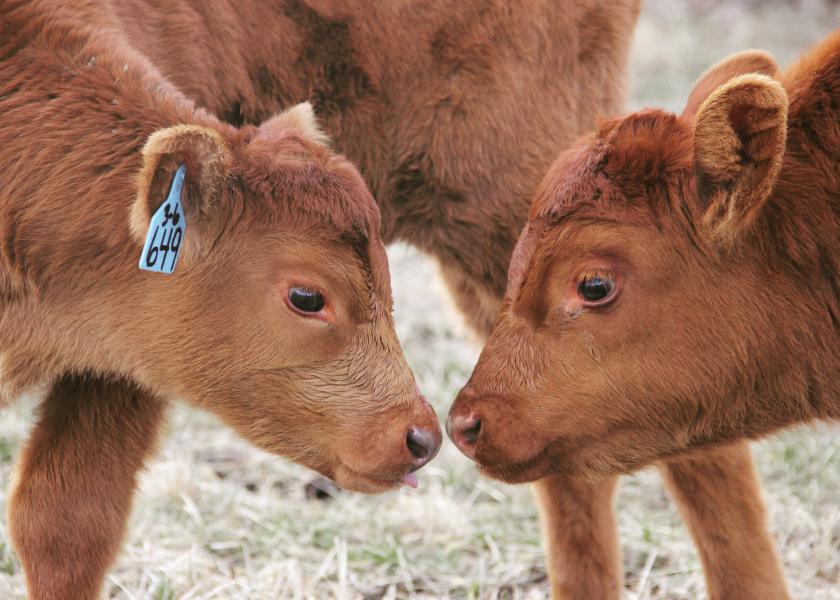Red Angus Foundation Sponsors Beef-on-Dairy Project

The following column by Tom Brink, CEO of the Red Angus Association of America, first appeared in the Red Angus Journal.
There’s a genetic revolution taking place in the dairy industry. Increased use of sexed semen on top-producing dairy cows is creating ample numbers of replacement heifers without the need to breed mediocre or lower end cows to dairy bulls. As a result, many dairies are now utilizing beef semen to produce growthier, more marketable calves that are 50% beef and 50% dairy. A typical scenario is to use female-sexed semen on one-third to half of the best cows, and beef semen on everything else. This approach virtually eliminates all low-value dairy steers.
With over 9.3 million dairy cows in the U.S., coupled with active use of artificial insemination, “beef on dairy” has become big business. A rough estimate would be that 7 to 8 million straws of beef semen are now being used by the dairy industry annually, with additional growth expected in the years ahead.
Even though this semen sells for less per unit than conventional beef semen, it has become a market too big to ignore. That’s why the Red Angus Foundation, Inc. is sponsoring a research project in central-California to demonstrate that Red Angus genetics can be used successfully to produce fast-growing beef-dairy-cross calves that will excel in the feedlot and hang up valuable carcasses at harvest.
About the Project
Red Angus has not been extensively utilized in beef-on-dairy applications, though we are aware of some commercial use in the Texas Panhandle and New Mexico region involving both Holstein and Jersey cows. The Visalia California project, funded in part by RAFI, was initiated in the fall of 2019. More than 50 head of Red Angus-sired calves were born to Holstein dams in July and August this year and wear the yellow FCCP tag.
Calves will be grown to around 350 pounds on-site at the calf-growing facility on the dairy of origin before being moved to a small feedlot, also located in central-California. Eventually, both steers and heifers will be fed out to 1,300 to 1,400 pounds and harvested. Planned data collection includes actual live gains and feed conversion rates on a group basis, along with individual DNA and carcass results.
Many of the project calves are mostly or entirely black-hided since black is dominant to red. However, a few red calves were produced, due to some of the cows being red-carrier Holsteins. White on the head, feet, flank and belly also showed up on some calves which is normal for beef-dairy-cross animals given their black-and-white-spotted dams. Some believe Red Angus does a better job than other breeds in getting rid of the white and producing more solid-colored calves.
More information will be provided on this project as the calves grow and progress during the months ahead. Thanks to RAFI for helping get this important research off the ground and we look forward to its results!







